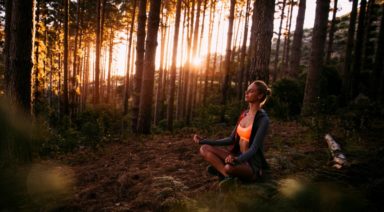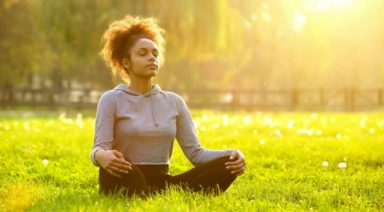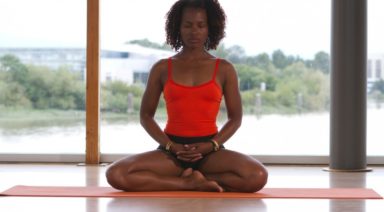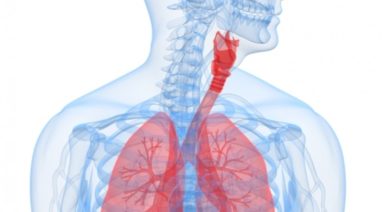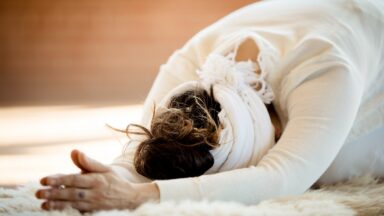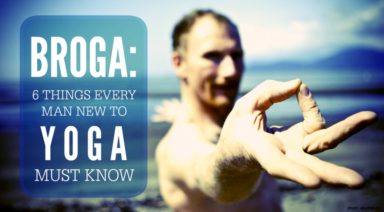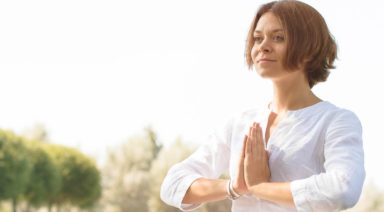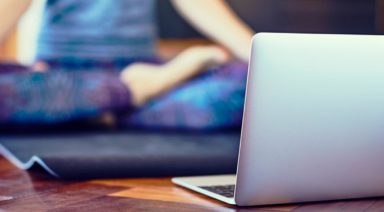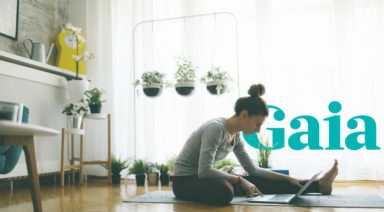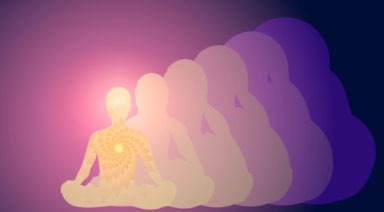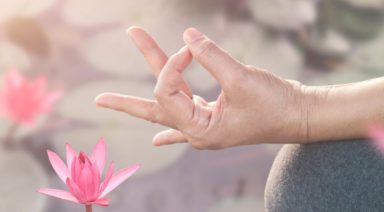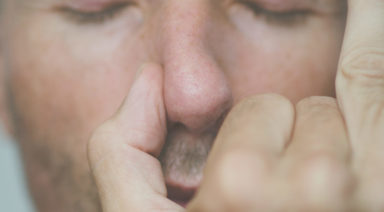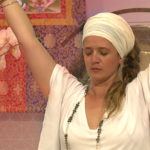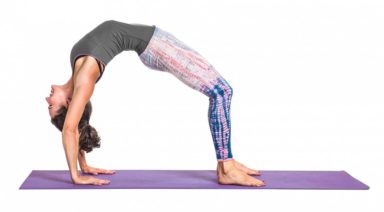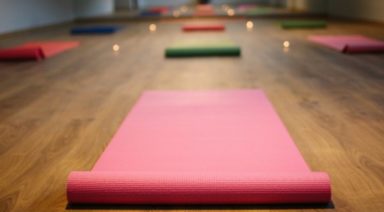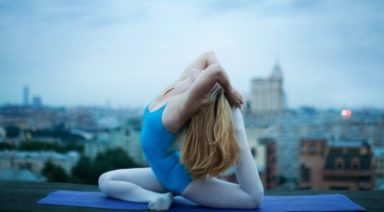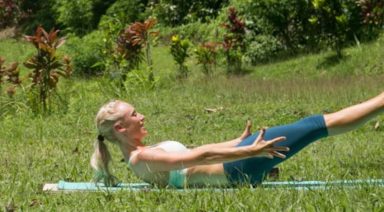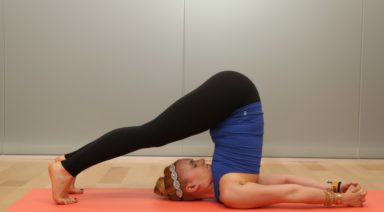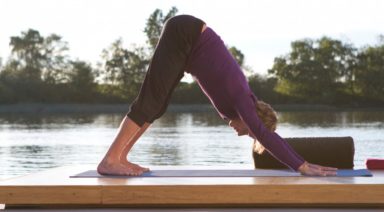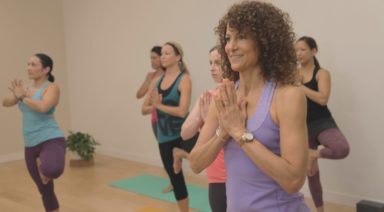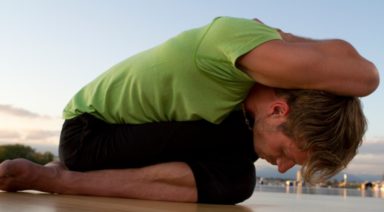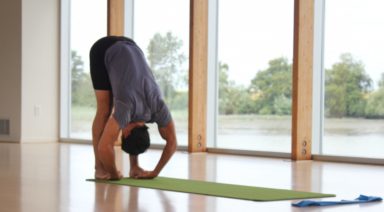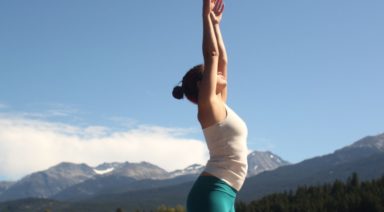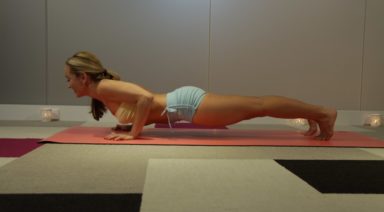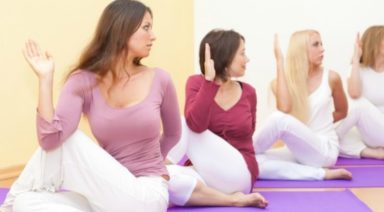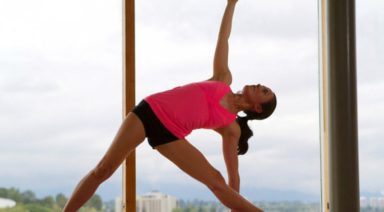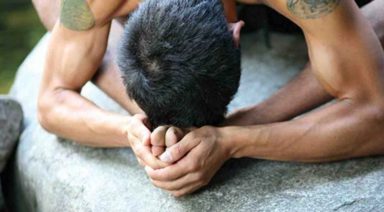Kapalbhati Pranayama
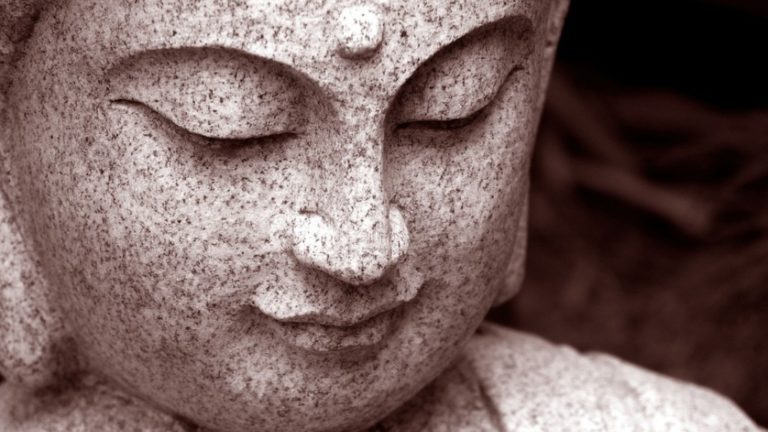
Step by Step and Shining Face.
Kapal in Sanskrit means FOREHEAD, and Bhati in Sanskrit means SHINING. Practicing Kapalbhati on regular basis leads to shining face with inner radiance. Kapalbhati is highly energizing abdominal breathing exercise.
What we do in Kapalbhati Pranayama
In Kapalabhati we do quick exhalation and natural inhalation. Normally exhalation takes one fourth of the time of inhalation. Quick exhalation and natural inhalation follow each other.
How to do Kapalbhati Pranayama
Step 1. Sit in comfortable crossed leg position with Back straight. Hands resting on knees in either chin or gyana mudra. Face to be relaxed.
Step 2. Inhale deeply through both nostril, expanding abdomen and exhale with the forceful contraction of abdominal muscles. (Pull the abdomen in by quickly contracting the abdominal muscles and exhale through the nose). The air is pushed out of lungs by contraction of the diaphragm.
Step 3. After exhalation again inhalation but inhalation should not involve any effort. To inhale just relax and the lungs will automatically expand and filled with air.
One can begin with 15 respiration. After completing 15 quick exhalation and natural inhalation , inhale and exhale deeply. This is one round.One can start the practice of Kapalbhati pranayama with 3 such rounds for practice.
Benefits of Kapalabhati
- Kapalabhati cleanses the lungs and entire respiratory system.
- The blood is purified and body gets an increased supply of oxygen to all cells.
- Digestion is improved.
- Abdominal muscles are strengthened.
- Prepare the mind for meditation.
- Energize the mind for mental work.
Precautions:
Kapalbhati should not be practice by those:
- Suffering from heart disease
- High blood pressure
- Hernia
- Should never be practiced when an asthmatic attack is in progress
- If pain or dizziness is experienced ,it is preferable to stop the practice till the sensation has passed. Practiced can be restarted with less force
- Quick exhalation should be comfortable to oneself. i.e. quick exhalation should not be too forceful
Common Mistakes:
- Abdomen is contracted while inhaling.
- Shoulders are contracted to push the air out when exhaling.
- Back and shoulders move during exercise.
****Points to Note:****
- Exercise should not be done if you are feeling uncomfortable at any time during the exercise.
- Rapid breathing used in this technique should be from the abdomen and not from the chest.
- Kapalbhati should be practiced on an empty stomach only.
- Kapalbhati should be practiced after the asanas and Relaxation (at least 10 minutes) and before meditation
- Chest should not move very much.
- It is always good and advisable that this exercise should be learned under supervision of yoga teacher after discussion with him about your health.
Pranayama Benefits and Techniques
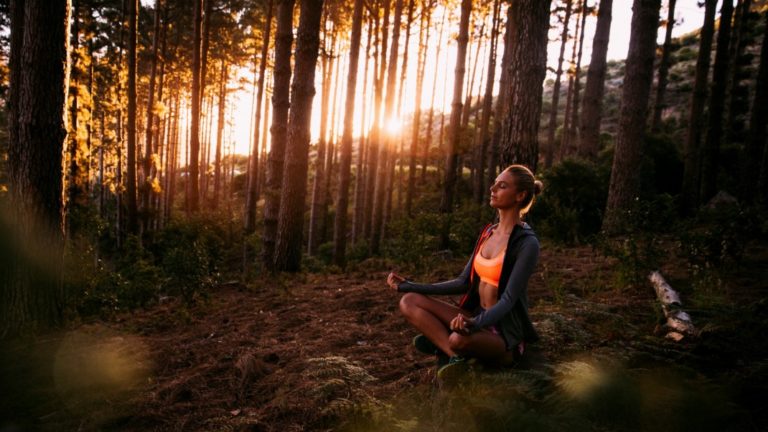
Practitioners of traditional Indian medicine (Ayurveda) tell us that the human body is made up of five separate elements (earth, water, fire, wind and space), three separate humors (called dosas) and our consciousness.
The earth element, according to the yoga scholar Françoise Wang-Toutain et al., forms the solid components of our body, and space forms the internal cavities through which all of the other elements flow. Fire and water are propelled by wind. Wind, in this instance, refers not only to our gross breath, but also to the basal energetic forces that govern all of our bodily functions.
The traditional name for these energetic winds is “vayu”. Said to be ten in total, these vayus are sub-units of a “master” wind (pranavayu) that joins our mind together with elements from our mother and father at the moment of our conception.
As we continue to develop in the womb, the pranavayu sub-divides itself into five primary and five subsidiary winds. These winds then provide the energy for essential bodily functions such as circulation, elimination, assimilation, respiration and locomotion.
When the vayus function efficiently, the body enjoys good physical health and mental clarity. When the winds become imbalanced or the channels through which they flow become damaged and sickness, disease and ill health arise.
Wang-Toutain et al. states that control of the breathing process (pranayama) provides one of the most direct methods to expand the life force and balance the vayus. Because of this, traditional Hatha Yoga practices rely heavily on pranayama practices for greater health and vitality.
Benefits of Pranayama
The Hatha Yoga Pradipika, a seminal text on pranayama practices, mentions a number of benefits that can arise as the energy winds are drawn into balance. These benefits include a “glowing countenance”, weight reduction, improved digestive capabilities, and a reduction in symptoms from a number of diseases.
Modern researchers have found that the benefits of yoga and pranayama practices include improvements in mood, increased energy, stress and anxiety reduction, better neurological functioning, and improved physical health.
A caveat: It’s important to note that the pranayama practices included in the Hatha Yoga Pradipika are typically done as part of a holistic regimen that also includes a number of additional purification techniques, dietary shifts and herbal remedies. If you wish to include pranayama practices as part of a healing regimen, it’s always best to practice these exercises under the guidance of a trained Ayurvedic specialist.
Pranayama Techniques for Home Practice
If you wish to practice pranayama techniques for yourself, it’s always important to begin slowly. Many traditional pranayama exercises utilize breath retention exercises in order circulate energy through the body. When overdone, these exercises can strain the lungs and create further imbalances in the energy system, so it’s always important to do them slowly, gently and according to your capacity.
*Please note that breath retention practices are contraindicated for expectant mothers.
How Should I Sit When Practicing?
Swami Svatmarama recommends the full lotus pose for pranayama practitioners. While the lotus provides one of the best supportive bases for those who can do it, the posture is notoriously challenging if your hip muscles are tight or you are simply not used to sitting on the floor for extended periods of time.
Because of this, you should feel free to sit in any seated posture that will allow you to keep your spine straight. If you are most comfortable sitting in a chair, feel free to use one.
Pranayama Exercises
The first exercise in the Hatha Yoga Pradipika is an alternate nostril breath with a breath retention at the end of every inhale. If you’ve never done pranayama before, this can be pretty challenging.
Because of this, I’ve included two simple exercises that can be used to prepare for the breath retention practice included in the Pradipika. If you’ve never done pranayama before, practice the following two exercises daily for at least two weeks each before going on to the third.
Sama Vrtti Pranayam (the Breath of Equal Duration)
Regular practice of this pranayama technique will help you to develop the ability to control the duration of your breath without force or strain. Benefits of this pranayama include stress reduction, increased energy, a deeper lung capacity and heightened ability to concentrate.
- Find your way to a comfortable seated position.
- Direct all of your awareness to your inhale and exhale.
- Make your inhale and exhale equal by inhaling to a count of five, four, three, two one, and exhale to the same count.
- With practice, increase the duration of each inhale and exhale until you can breath in and out to a slow count of ten.
- Practice a minimum of seven repetitions or as many as you are comfortable with.
Nadi Shodanam Version 1 (Energy Channel Cleansing Breath)
- Take attention to your right hand. Place the tip of the index and middle finger on the space between your eyebrows.
- Use your thumb to block your right nostril, and inhale fully through the left.
- Block your left nostril with your thumb, and exhale fully out the right.
- Reverse the process. Breathe in through the right side, and out through the left.
This cycle completes one full round.
Note: As you breath in and out, attempt to make your inhales and your exhales approximately equal in length, just as you did in Sama Vrtti Pranayama. Mentally count the length of the breath, and expand the count as the breath becomes easier.
Begin with seven full rounds of this breathing pattern. As it becomes easier, work up to more in accordance to your capacity.
Nadi Shodanam Version 2 (the Alternate Nostril Breath)
After a few weeks of practice, you may find that you’re ready to begin Nadi Shodanam. This powerful practice is the first breathing exercise mentioned in the Hatha Yoga Pradipika.
The breathing pattern in this form of Nadi Shodonam is identical to what you’ve already learned with one notable exception: in this practice, the breath is retained at the top of every inhale.
Holding your breath draws prana (life force) into your body and allows the energy to circulate more fully through your system. With time, this process can help to balance your energy winds and repair damage to the energy channels through which your prana flows.
Swami Svatmarama writes that this pranayama has the potential to fully purify the body’s energy channels when practiced four times per day for three months.
To practice:
- Bring your attention to your right hand. Place the tip of your index and middle finger on the space between your eyebrows.
- Use your thumb to block your right nostril, and inhale fully through the left.
- Hold your breath at the top of your inhale for as long as is comfortable
- Block your left nostril with your thumb, and exhale fully out the right.
- Reverse the process. Breathe in through the right side, hold your breath at the top and breathe out through the left.
Once you’ve grown accustomed to the breath, practice making your inhale, retention, and exhale equal in length.
Kapalabhatti Pranayam
Kapalabhatti Pranayam (the skull-shining breath) is one of six additional cleansing practices mentioned in the Hatha Yoga Pradipika. Benefits of this exercises include increased energy and heightened mental clarity.
In this practice, exhales are short and active and inhales are passive. Inhales occur as a result of forcing the breath out in short, quick bursts through the nostrils (sort of like the breath that you use to blow out a birthday candle, only through the nose instead).
To begin:
- Find a comfortable seated position.
- To begin the first round of kapalabhatti, inhale deeply through your nose, and then exhale half of your air.
- Once your lungs have emptied approximately halfway, squeeze the muscles of your belly down and in to press air out through your nose in a quick burst. Relax your belly and let the lungs effortlessly fill to halfway again.
- Repeat according to capacity, building up to three rounds of fifty repetitions.
Note: Becoming comfortable with Kapalabhatti pranayama can take some practice, so go slowly at first. The slower tempo will allow you better feel the active nature of the exhale and the passive nature of the inhale. Pay attention to any feelings of dizziness or breathlessness and stop the exercise for the day if they arise.
One Fluid Practice
At first, it’s best to practice each of these exercises one at a time. For example, you might consider practicing Sama Vrtti Pranayama for a few weeks before beginning Nadi Shodanam version 1. Once you’ve got it down, practice both exercises in one session.
When you’re ready to progress, add the next practice in the cycle until you are able to do all of the breathing exercises together as one full sequence. As you practice, rest as much as necessary and avoid force or strain.



